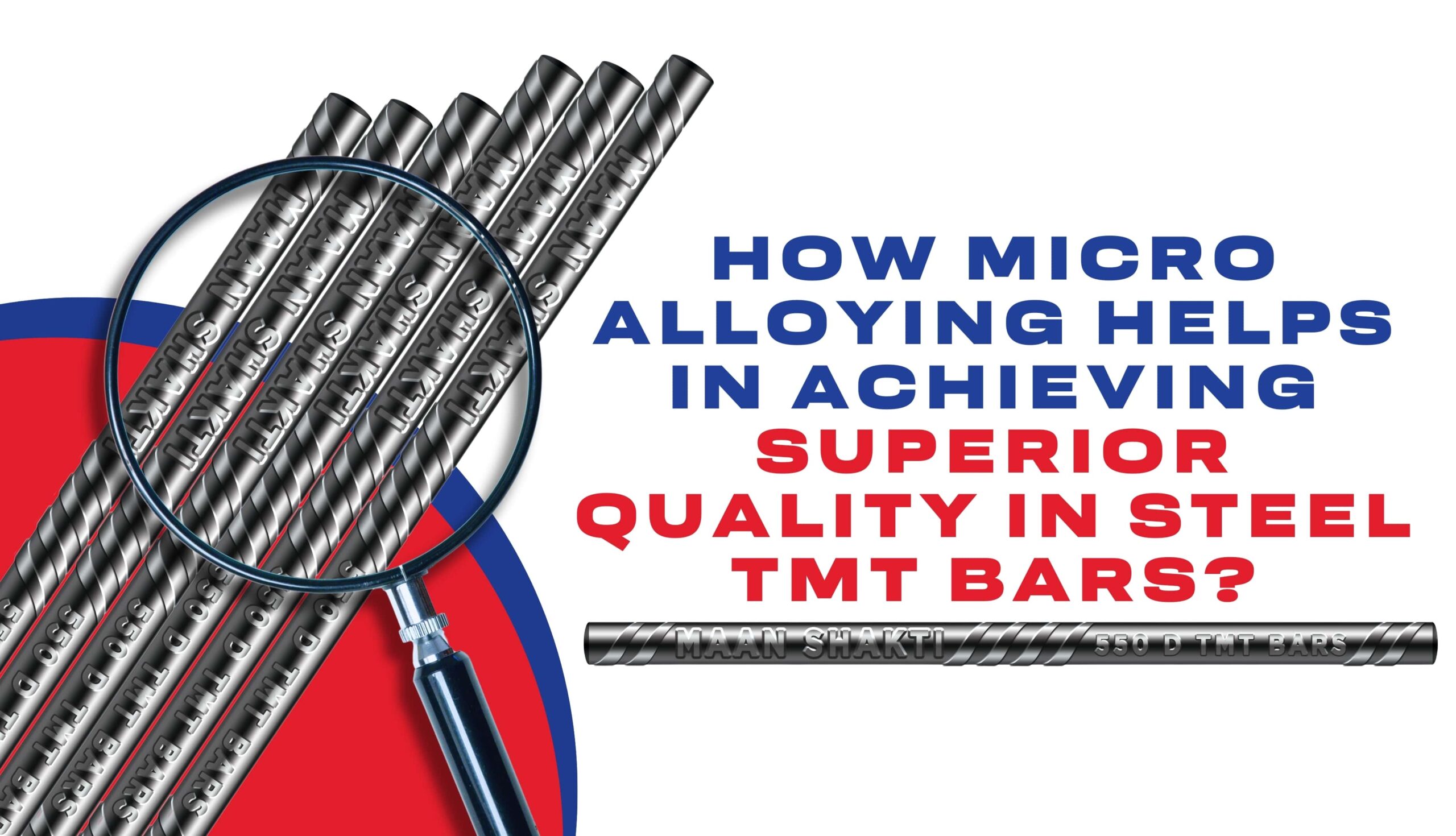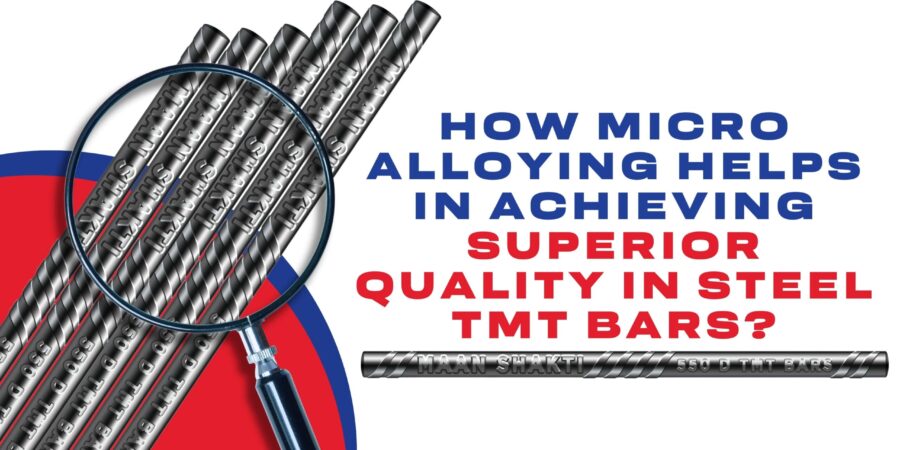The thermo-mechanically treated bars are in itself a huge part of any construction project. Its strength and durability is undeniable. However, with newer advancements in the steel industry, micro-alloying came in. Since then, the properties of TMT bars have been revolutionised.
Micro-alloying involves the deliberate addition of trace elements such as vanadium, niobium, and titanium to the steel matrix during production. These minuscule additions yield substantial improvements in the strength, durability, and overall performance of TMT bars. By leveraging the unique properties of these micro-alloys, a steel manufacturer or TMT wholesale distributor can enhance the structural integrity of TMT bars without compromising other crucial characteristics.
This nuanced approach allows for tailoring TMT bars to meet specific construction requirements, ensuring superior quality steel TMT bars in various applications. And if micro-alloying is now such a big part of TMT bars, how can we not explore the chemistry behind it?
Understanding the Chemistry Behind Micro-Alloying
We understood that micro-alloying elements significantly influence the properties of superior-quality steel TMT bars. Each element contributes uniquely to the enhancement of these bars’ performance in a variety of applications. Hence, we will delve into some of these elements and try to understand their role in steel bars.
Vanadium
When judiciously added, it significantly enhances steel strength and hardenability. It forms robust carbide compounds that impede grain growth during heat treatment. This results in improved mechanical properties and wear resistance.
Niobium
Niobium refines grain structure, enhancing both weldability and toughness. It ensures a stable heat-affected zone during welding, crucial for structural integrity in construction projects that heavily rely on welding.
Titanium
Similar to niobium, titanium also aids grain refinement and deoxidation to promote a fine and uniform microstructure. This refinement enhances the toughness and ductility of TMT bars, crucial for withstanding external stresses in construction environments.
Boron
This enhances the hardenability and quenchability of steel. It also facilitates rapid cooling during the heat treatment process, resulting in a hardened structure that improves the overall strength of TMT bars.
Zirconium
Zirconium aids in controlling grain size during the heat treatment process. This fine-tuning of the grain structure enhances the strength and toughness of TMT bars, ensuring their suitability for various construction scenarios.
Molybdenum
It contributes to steel strength and corrosion resistance, forming hard carbides that bolster the overall strength of TMT bars. It makes them resistant to environmental factors that may lead to corrosion.
Rare-earth metals
Rare-earth metals, such as cerium and lanthanum, contribute to grain refinement and cleanliness in steel. They assist in removing impurities, ensuring a more homogeneous microstructure, and enhancing the mechanical properties of TMT bars.
Performance of Micro-Alloyed TMT Bars in Different Scenarios
It is true that micro-alloyed TMT bars are a versatile structural element. They are indispensable in projects facing high-stress environments, seismic zones, and extreme weather conditions. Let us see how
Higher-Stress Environment
In high-stress construction settings, where heavy loads and dynamic forces are commonplace, micro-alloyed TMT bars showcase superior strength and durability. The precise combination of elements in the micro-alloying process fortifies the bars, allowing them to withstand intense pressures and maintain structural integrity.
Seismic Zones
Micro-alloying contributes significantly to the seismic resistance of TMT bars. In earthquake-prone regions, the refined grain structure and enhanced toughness imparted by micro-alloying enable TMT bars to absorb and dissipate seismic energy effectively. This property helps mitigate the impact of ground motion on structures, ensuring a higher level of safety.
Extreme Weather Conditions
From scorching heat to freezing temperatures, micro-alloyed TMT bars exhibit resilience in the face of diverse weather extremes. The fine-tuned microstructure and corrosion-resistant properties derived from specific alloy additions enable these bars to endure harsh climatic conditions without compromising their structural integrity.
Takeaway
From this blog, we not only understood the importance of micro-alloying to produce superior-quality steel TMT bars but the chemistry behind it as well. It revealed the unique contributions of each element, highlighting their role in refining the grain structure, improving mechanical properties, and enhancing corrosion resistance.
We also came across its performance in different scenarios that showcased its unparalleled strength and adaptability. Now, with these additional insights, customers can make up their minds on what materials to purchase from the TMT wholesale distributor.


